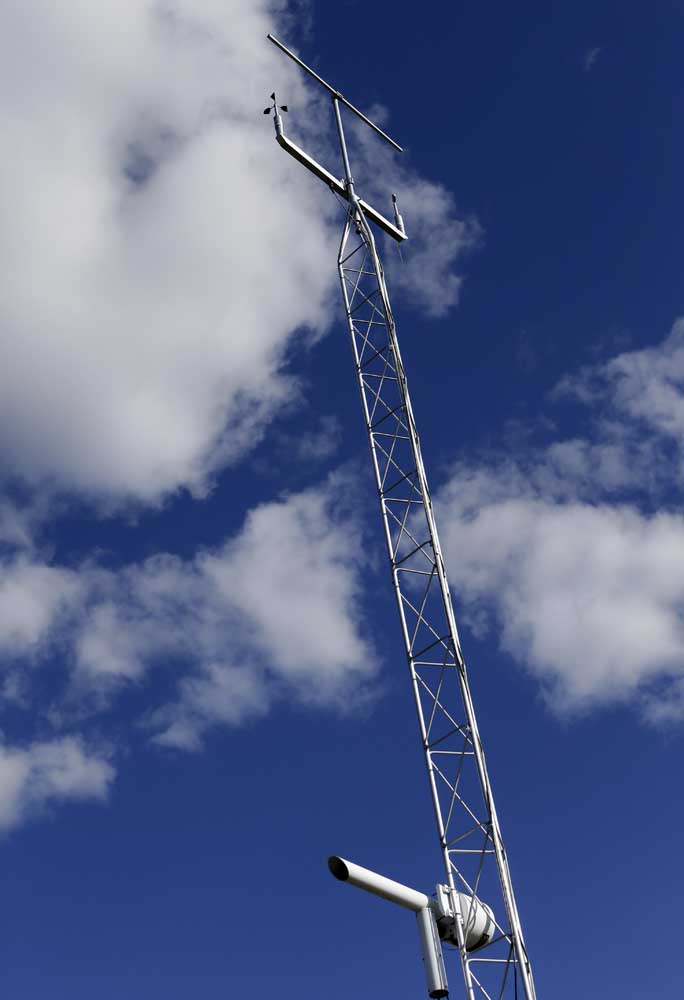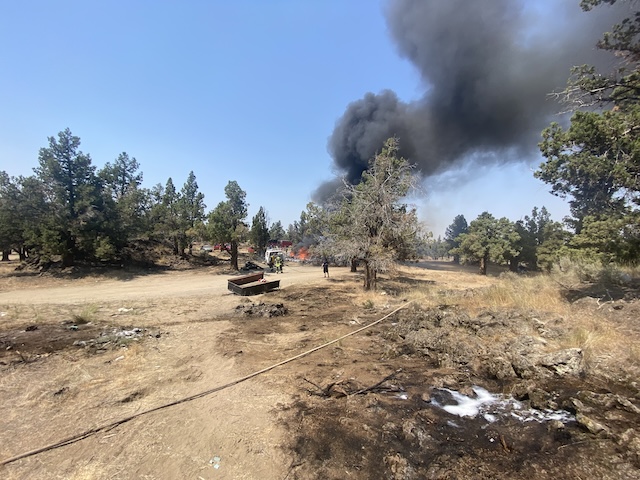Heard about Bend’s poor air quality? Breathe easy.
Published 12:00 am Saturday, April 21, 2018

- ORIG 04/19/18 An air monitor is seen at Davidson Park in Prineville on Thursday, April 19, 2018. (Joe Kline/Bulletin photo)
Does Bend really have the 26th worst air pollution among the top 201 cities in the United States? Probably not.
A report issued this week by the American Lung Association measured air pollution rates in U.S. counties as well as the largest metropolitan statistical areas in the nation. The Bend-Redmond-Prineville region was ranked as having the 26th-highest number of days with unhealthy levels of particle pollution from 2014 to 2016.
Trending
Particle pollution can include things such as vehicle exhaust and smoke from forest fires or wood burning stoves, and is linked to a number of serious medical complications, particularly for people with chronic health problems.
“Overwhelming evidence shows that particle pollution — like that coming from exhaust smoke — can kill,” the group said in the report.
According to the report, the Bend-Redmond-Prineville area had six orange level days, which are considered unhealthy for sensitive groups, and two red days, which are unhealthy for everyone. Children and the elderly are most at risk, as are individuals with asthma, chronic obstructive pulmonary disease, heart disease or diabetes.
But the report did not include data from Deschutes County, using only data from the air quality monitoring station in Prineville. The city of Prineville has been working to improve its air quality, including discussing whether burn barrels in the vicinity of the air monitor might have affected their data. The authors indicated such data isn’t collected in Deschutes County.
The report relied on data provided by the U.S. Environmental Protection Agency from federal reference monitors. Those air quality monitors are placed in areas where federal and state officials have concerns about air quality problems, and Prineville has the only such monitor in Central Oregon.
“EPA and the state figure out where the locations need to be, and usually, they are located where they think the problems are going to show up,” said Janice Nolen, assistant vice president of national policy for the American Lung Association. “But they’re not the only places. They also put them in other places.”
Trending
Data from those monitors is available only after a six-month delay. And only about 900 of the more than 3,000 U.S. counties have such monitors.
The Oregon Department of Environmental Quality measures air quality in Bend, Sisters and Madras using a different type of monitor, which provides hourly updates on air quality. From 2014 to 2016, the Bend monitoring station recorded only two days where particulate matters were at levels deemed unhealthy for sensitive populations.
But while data from those types of monitors are reported to the EPA, they were not included in the data used by the authors of the report. And that may have given a false sense of the air quality in Bend and Redmond.
Oregon DEQ spokesman Greg Svelund said Central Oregon benefits from relatively little industrial pollution and has good air circulation. Although weather inversions can trap unhealthy air in place, they are uncommon, even in the winter.
“Mostly, we’re pretty fortunate weather-wise,” Svelund said.
The report did not include data from 2017, which had one of the worst fire seasons on record for the region. Svelund said there were 13 days at unhealthy levels in Bend last year, mostly during a 10-day period in late summer when the city was inundated with wildfire smoke.
“I don’t want to minimize that,” Svelund said. “However, for the most part, with the exception of particulate that’s caused by various types of smoke, we’re very fortunate in Central Oregon with the air quality that we have.”
Prineville has unique challenges due to its geography that may make it a poor proxy for air quality in rest of the region.
“We’re living in a valley surrounded by rimrocks,” said Crook County Fire Chief Matt Smith “We’re susceptible to inversion, so when that happens, we will get that air trapped toward the ground that will have some smoke in it. Then, the question becomes, ‘Where did the smoke come from?’”
In the summer, smoke in Prineville generally comes from forest fires. But in fall and winter, smoke could come from controlled burns or wood stoves.
Prineville was flagged about four years ago for being out of compliance with air quality standards, and the city formed an air quality committee to address the problem. The group has relied on public education efforts to reduce burning at times when air quality is approaching unhealthy levels. The committee had discussed whether burn barrels used by residents living nearby the air quality monitor might be affecting the measurements.
“Burn barrels in Prineville, especially, have been common for years,” Smith said. “They’re less common now that the city actually has a permit system.”
Permits were not issued for the houses nearby the Prineville monitor, and air quality rates have gone up. But it’s impossible to tell whether the burn barrels skewed the results.
“The burn barrels were removed; the problem went away,” Smith said. “It’s anybody’s guess. Is it wood stove smoke or is it wildfire smoke from California? You can argue that issue all day long.”
Where all the various parties agree is that high levels of particulate matter can have very serious health consequences. According to the lung group, many of the particles in smoky air are so small, they are invisible. The body is more adept at catching and expelling larger particles by coughing or sneezing. But smaller particles — some just a fraction of the width of a human hair — get trapped in the lungs and can cause breathing difficulties. The smallest particles can pass through the lung tissue and enter the bloodstream.
“In Central Oregon, in particular, there’s a culture out there that it’s part of where we live, and there’s not much you can do about it,” Svelund said. “There’s a lot of things that people can do to protect themselves.”
Health officials recommend that individuals stay indoors during unhealthy air quality days. The use of indoor air filters can help remove the particles that enter through the ventilation system or as doors are opened. Most common face masks won’t filter out the smallest particulate matter, but masks labeled as N95 or N100 particulate filtering can block 95 to nearly 100 percent of very small particles.
Even for healthy individuals, vigorous exercise when air quality is poor isn’t recommended. That seems to be a particular problem for the ultra-active Central Oregon population.
“This attitude that we’re going to tough it out,” Svelund said. “That’s got to go away.”
—Reporter: 541-633-2162, mhawryluk@bendbulletin.com








